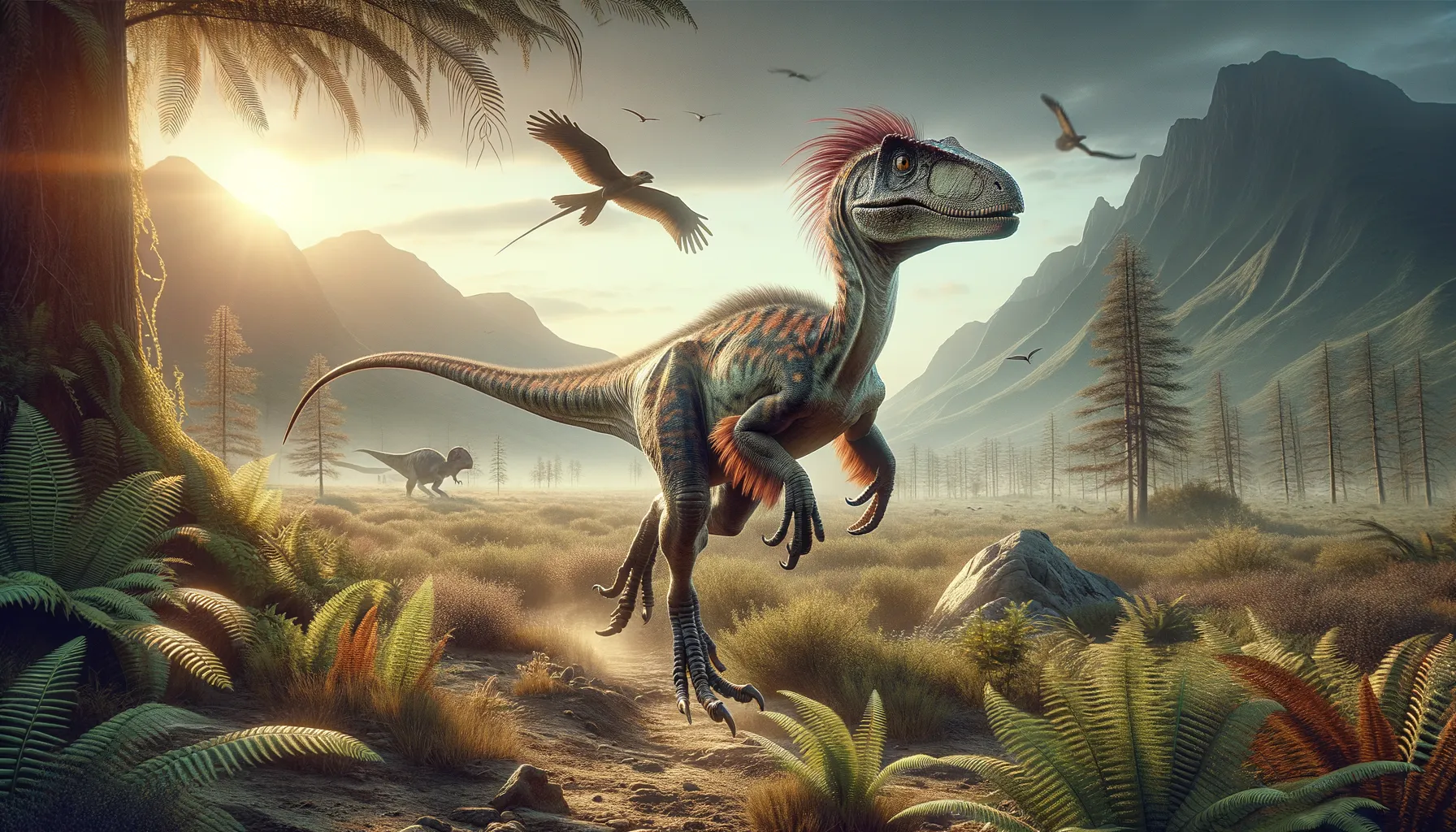
Vayuraptor
Swift predator from the Cretaceous skies.
Period
Cretaceous
Length
Approximately 3 meters (9.8 feet) long.
Height
About 1.5 meters (4.9 feet) at the hip.
Weight
Around 100 kilograms (220 pounds).
Vayuraptor was a swift theropod dinosaur with a slender build, allowing it to pursue prey with speed and agility. Its name reflects its bird-like characteristics. This dinosaur thrived during the late Cretaceous period and lived in what is now known as central Asia. Its skeleton suggests it was well-adapted for a predatory lifestyle, exploiting its environment to track and catch prey effectively.
Diet
Vayuraptor was a carnivorous predator. Its diet likely consisted of small to medium-sized dinosaurs and other available prey. Its keen vision and agility made it an efficient hunter.
Hunting
Vayuraptor used its speed and agility to outmaneuver prey. It likely relied on sudden bursts of speed and surprise tactics to capture its targets. With sharp teeth and claws, it could effectively dispatch its prey.
Environmental challenges
Vayuraptor faced various challenges in its environment, including fluctuating climates that affected prey availability. Competition with other predators meant Vayuraptor needed to be resourceful and opportunistic in its hunting strategies. It likely had to adapt to changing landscapes over time, finding new hunting grounds as needed. Natural disasters, such as volcanic eruptions or changing sea levels, also posed threats.
Speed
Estimated to be quite fast, similar to a modern ostrich.
Lifespan
Believed to live up to 20 years.
First discovery
First discovered in the 1960s in central Asia.
Fun Facts
- Vayuraptor is a name derived from the Sanskrit word 'Vayu' meaning wind, hinting at its swift nature.
- This dinosaur is believed to have been a feathered theropod, showcasing the link between dinosaurs and modern birds.
- Vayuraptor lived approximately 70 million years ago during the Late Cretaceous period.
- Fossil evidence suggests that Vayuraptor was a carnivore, likely hunting smaller dinosaurs and prehistoric mammals.
- The Vayuraptor's agile build indicates it might have had excellent running capabilities, much like modern-day cheetahs.
- Vayuraptor fossils have been primarily found in what is today the Indian subcontinent.
- This dinosaur's discovery has helped scientists understand more about the diversity of prehistoric life in ancient India.
Growth and Development
Vayuraptor hatchlings would have grown relatively quickly, requiring high-energy food to sustain their rapid development. Juveniles faced dangers from predators and needed to develop survival skills early. As they matured, their physical capabilities improved, making them more efficient hunters. Social learning from older individuals may have played a role in their development.
Habitat
Vayuraptor inhabited a variety of environments, from lush forests to open plains, adapting to each to find food. Its habitat was rich in biodiversity, providing ample hunting opportunities. Seasonal changes affected its habitat, requiring seasonal migrations. The landscape was dotted with rivers and small bodies of water, influencing its daily movements.
Interaction with other species
Vayuraptor likely competed with similar-sized predators for food sources. It may have opportunistically scavenged from larger carnivores' kills. Herbivorous species acted as its primary prey, shaping their behavior and lifestyle. Its presence could influence the population dynamics of prey species in its habitat.
Natural lifespan
Vayuraptor could naturally live for around 15 to 20 years.
Reproduction
Vayuraptor likely laid eggs in nests, similar to modern birds and some reptiles. Parental care may have been present, with adults guarding and incubating eggs. Hatchlings would have been vulnerable and dependent on parents initially. The reproductive cycle was likely linked to environmental factors, ensuring hatchlings were born during more abundant food periods.
Social behaviour
Vayuraptor may have lived in small groups or loosely affiliated packs. Social interaction could have aided in hunting and defense against larger predators. Communication might have included vocalizations and visual displays. Cooperative behavior could have influenced hunting success and survival rates.
Fossil locations
Fossils of Vayuraptor have been found in central Asia, providing insights into its existence. Excavations revealed well-preserved skeletal remains, aiding scientific study. These fossils contribute to understanding the biodiverse ecosystems of the Cretaceous period. Ongoing discoveries continue to refine knowledge of its range and behavior.
